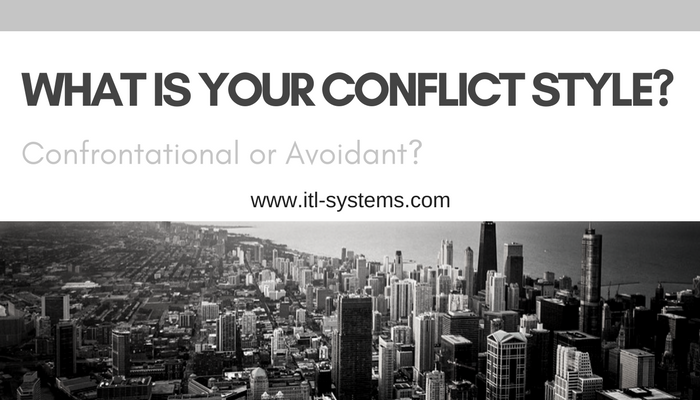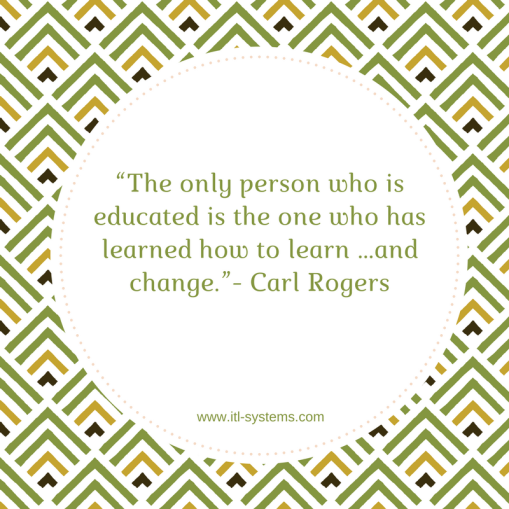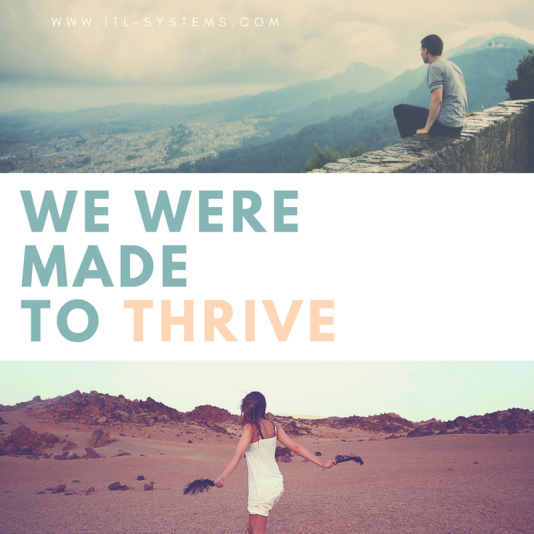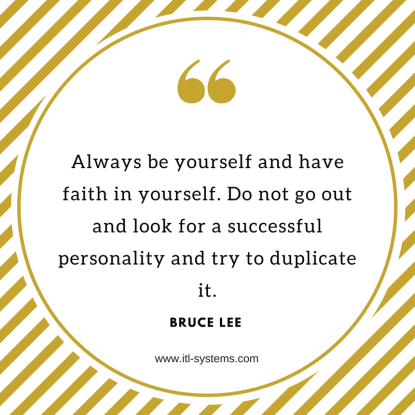
Most of us have a very strong default response to conflict. Today we are going to examine two very broad categories of conflict style, avoidant and confrontational. In these styles, we will either try to avoid conflict at all costs, or rush in words flying to deal with it head on. Neither one of these tendencies is inherently bad; however, just like all things, when taken to the extreme they can start to be a blind spot or a place where we struggle in our interactions with people. We all fall somewhere on this spectrum, sometimes pulling tendencies from both types. There are many other ways of viewing conflict, which are very evident in the personality types of the Enneagram; however, today we are only going to look at the very broad descriptions of confrontation and avoidance.
When I look back on my life, I realize that I had a strong aversion to conflict, which is pretty ironic when you consider that is what I decided to study and and working with conflict is a large part of my career. I recognized that I did not like conflict, and that drove me to explore why conflict occurs, how we respond to it, and how we can take something that is naturally uncomfortable and transform it into a moment of growth.
Throughout my career, I have recognized that many leaders have a strong default when it comes to conflict. Many of them have always just resolved conflicts based on their default, but never really explored why they responded in a certain way, and many do not take the time to dig deep and take a look at whether their conflict style is effective in meeting their needs, as well as the needs of the organization.
Avoidant Style of Conflict
If you are conflict avoidant, in many cases you will ignore and avoid possible points of conflict or build your interactions around the conflict in a way that you never address the elephant in the room. If you are conflict avoidant, you have probably had the experience of being hurt or insulted by someone, but you just smile and nod so you do not have to deal with the issue. After the pain has occurred, you may do everything in your power to stay away from that person and not have to work with them on any projects.
If you are leader, how is conflict avoidance detrimental? Don’t you want to avoid rocking the boat and let everyone keep working? Not necessarily. When people say something that rubs you the wrong way, something I call a sandpaper moment, it has an impact on us. We feel a physical and emotional pain, and we start to build scripts about that person, who they are, and how we don’t want to ever deal with them again. In many cases, the people who said or did something to cause the harm are not aware that what they said hurt you, or they are not aware of the extent of the harm.
When people are conflict avoidant and they are trying to avoid interacting with someone because they don’t want to deal with the issue, organizations and relationships suffer. They waste time thinking about the conflict and how they can get around working with that individual. This all has a cost. Time wasted finding alternate means of completing a project or not talking to someone key to a project can completely derail productivity. Ultimately, conflict avoidance escalates to increased employee turn over. Employees will leave an organization because they are not able to work with another person in the organization, and their quality of life suffers because they are constantly on guard about dealing with the entire situation.
Fortunately, we can learn tools to help us to address conflict, even if we are conflict avoidant. One of the first tools I use to coach clients who are conflict avoidant is to ground yourself. I have found that when I want to run away and avoid conflict, the best thing I can do is to place both feet on the ground, take a deep breath, and lean into the situation. It is very easy for someone who is conflict avoidant to lean back and disconnect from the situation, thinking that they will deal with it later, or to completely ignore what is going on and start thinking about how they can avoid uncomfortable situations in the future.
 The second tool is using the “I” statement formula to let someone know that something they did had an impact on you, what the action was that caused it, and how they can change the behavior in the future. The structure of an “I” statement is: I feel (name the specific impact, such as I feel disrespected), when you (name the specific action, such as when you speak over me in meetings), because (why, such as I did a lot of research on this topic and I want to make sure that we can integrate all of our ideas into the project.) I statements are an effective script to use, especially when you are reluctant to speak up. They allow you to state what happened on your side and request a behavior change, without vilifying the other person and putting up defensive walls.
The second tool is using the “I” statement formula to let someone know that something they did had an impact on you, what the action was that caused it, and how they can change the behavior in the future. The structure of an “I” statement is: I feel (name the specific impact, such as I feel disrespected), when you (name the specific action, such as when you speak over me in meetings), because (why, such as I did a lot of research on this topic and I want to make sure that we can integrate all of our ideas into the project.) I statements are an effective script to use, especially when you are reluctant to speak up. They allow you to state what happened on your side and request a behavior change, without vilifying the other person and putting up defensive walls.
The third tool to take into account, is evaluating when to respond. None of us like to have our faults or mistakes called out in front of other people. So, if possible, wait to have a one on one conversation with the other person. You will be able to create more space for open conversation, and will be able to decrease defensiveness. Now, just because I said you can wait until it is one on one, it does not mean that you should wait for a long period of time before responding. I recommend responding within twenty four hours. If you don’t respond within twenty four hours, people tend to forget what happened and you start to vilify the other person more, and start creating more reasons not to initiate a conversation to resolve the issue.
I encourage you to lean into your natural strengths, ground yourself, and use your tools to respond, even if you are conflict avoidant. Addressing conflict in a good way early can save time, money, and heartache for you and the organization. If you do not feel safe, then talk to HR before using these tools to gain assistance on the best course of action. As always, if you have questions or would like coaching, please contact Lauren at www.itl-systems.com, or lraio@itl-systems.com.
Confrontational Style of Conflict: What Conflict? This is a discussion!
On the opposite side of the spectrum, some individuals are more confrontational. They do not view conflict as a problem or something to be avoided, but rather an opportunity to get what they need or even just an opportunity to stretch their mental muscles and engage in playing devil’s advocate. A lot of people who are more confrontational do not view issues as conflict, rather they are just discussing things that need to be addressed. Many times more confrontational types do not even feel like they are in a conflict. It is only when people start wilting and backing away from them that they realize that something is going on.
If you are a leader, wouldn’t you think that it is a good thing to get everything out on the table so it can be addressed. The answer is yes and no. While it is important not to sweep things under the rug because they will ultimately re-appear and pile up, it is also important to recognize that sometimes we have to dial back our responses and take the preferences of other people into account. Being too strong in a conflict situation can cause people to become defensive and not want to work with you, once again wasting time, encouraging poor decision making, and increasing employee attrition.
You might have a more confrontational conflict style if you find yourself always entering into difficult situations with an “I’m going to win” mentality. People more confrontational conflict styles also find themselves feeling like it is me against the world. They fear that if they are not strong then they will be viewed as weak and will ultimately be hurt. You usually know when a more confrontational person enters into the conversation because they are moving towards the conflict and people involved. They frequently are moving towards the conflict and people with high levels of energy, which can be observed by higher volume and in many cases physically moving towards a person.
When coaching people with a confrontational conflict style, I recommend a few different tools. The first tool is to dial it back. What feels normal and comfortable for people with a more confrontational style, can be overwhelming for others. So, take a deep breath and dial back some of the energy and power. Dialing it back will allow the other parties to hear you more easily, and not trigger a fight or flight response.
The second tool is to align your intent and your impact. If you are more confrontational, you tend to be very direct, which can be misinterpreted as being antagonistic or aggressive. Take a deep breath and think about what you are saying and doing. How will it be perceived by the other party? Will I convey the message I intend, or will I have an unintended impact (such as hurting someones feelings and making them defensive). If you are unsure, ask a close friend to talk through it with you. Make sure that your friend is someone who is comfortable letting you know if you are coming across in an unintended manner. We all need someone who can help us work through ideas and call us on our blindspots.
The third tool is to use “I” statements. While people with more confrontational styles are not as fearful of conflict so they don’t need a script for that reason, the “I” statement script does help them to reframe the issue so they can identify personal impact and request change without blaming or creating a defensive conversation that ultimately can escalate the situation.
The Cost of Conflict
Many of us have made it fairly far in life without really having to think about the effect of our conflict style. We have worked through conflict, but maybe we weren’t aware of the effect on the people around us, or how it influenced our career moves. According to the Michael Lazan’s article The Financial Cost of Conflict in Organizations, the financial cost of a single conflict in an organization can total $255,000 in employee attrition, wasted time, and lower return on investment in labor. This is a substantial cost for a single conflict.
What would happen if you empowered yourself and empowered your employees to transform conflict into an opportunity for growth and development? Identifying your conflict style, and the strengths and blind spots that accompany your style, allows you to create your own developmental path. You can write yourself reminders to use your tools when you are in a conflict scenario. It may be possible to create new rules of relationship that allow you to address situations before they escalate into higher levels of conflict, and ultimately higher costs of conflict for the organization and personal well-being.
As I stated before, these are two very broad categories of conflict. We all have more specific reactions to conflict based on our personalities and experiences. I encourage you to dig deeper to explore how you respond, and why. If you would like to learn more about your personality and conflict, contact Lauren at www.itl-systems.com or lraio@itl-systems.com. We offer individual coaching, as well as Enneagram personality assessments.
 Back in January, I wrote an article about the power of relational giving, and how community was helping to build the Char Hope Foundation. Now, here we are on #GivingTuesday, and I am even more thankful and filled with awe as I look back on what the Char Hope Foundation has accomplished, and where they are going in the future.
Back in January, I wrote an article about the power of relational giving, and how community was helping to build the Char Hope Foundation. Now, here we are on #GivingTuesday, and I am even more thankful and filled with awe as I look back on what the Char Hope Foundation has accomplished, and where they are going in the future.
 We have seen many companies in the news lately that have conflicts that escalated very quickly into something that is seemingly unmanageable. Between corporate discrimination and harassment, to political rhetoric, our newsfeeds have been filled with conflict that escalated very quickly and inflamed the tempers of many people at home, in the workplace, and in our own neighborhoods. Conflict happens. We accidentally (and yes, sometimes purposefully) say something that offends someone. Or, we have differing opinions, and we don’t necessarily engage in respectful conversations. But what do we do when we are faced with a conflict? In many ways our current communications networks (i.e. social media, the news, etc) encourage us to escalate the conflict. How do we stop the escalation and put out the fires?
We have seen many companies in the news lately that have conflicts that escalated very quickly into something that is seemingly unmanageable. Between corporate discrimination and harassment, to political rhetoric, our newsfeeds have been filled with conflict that escalated very quickly and inflamed the tempers of many people at home, in the workplace, and in our own neighborhoods. Conflict happens. We accidentally (and yes, sometimes purposefully) say something that offends someone. Or, we have differing opinions, and we don’t necessarily engage in respectful conversations. But what do we do when we are faced with a conflict? In many ways our current communications networks (i.e. social media, the news, etc) encourage us to escalate the conflict. How do we stop the escalation and put out the fires?
 When you are not being who you are, it is really hard to embrace the moment. If you are trying to fit into a certain mold of what a leader, significant other, friend, co-worker etc “should be,” then it is hard to embrace the moment. You are too busy trying to anticipate your next move and worrying about how people are judging you. This is your time to define who you are and what you stand for. Once you know your vocation, values, and truth, each moment is a step in your life that should be savored. It is a step in your journey that is meant to be embraced.
When you are not being who you are, it is really hard to embrace the moment. If you are trying to fit into a certain mold of what a leader, significant other, friend, co-worker etc “should be,” then it is hard to embrace the moment. You are too busy trying to anticipate your next move and worrying about how people are judging you. This is your time to define who you are and what you stand for. Once you know your vocation, values, and truth, each moment is a step in your life that should be savored. It is a step in your journey that is meant to be embraced.
 Keep up to date with the latest trends in your field: This one is pretty self explanatory. Most leaders are members of at least one professional organization, and those organizations publish research articles each month. Keep reading them. It is too easy to just quickly delete the email, or to place the journal in a stack on your bookcase. Block out time to read at least one article a week. Setting a designated time to read will help you to turn reading into a habit. If you find it a little too easy to delete those email articles, print them out and place them in a location where you will be encouraged to read them. This will help you to stay up to date on what is going on in your field, and it will also help you to continue to grow as a leader.
Keep up to date with the latest trends in your field: This one is pretty self explanatory. Most leaders are members of at least one professional organization, and those organizations publish research articles each month. Keep reading them. It is too easy to just quickly delete the email, or to place the journal in a stack on your bookcase. Block out time to read at least one article a week. Setting a designated time to read will help you to turn reading into a habit. If you find it a little too easy to delete those email articles, print them out and place them in a location where you will be encouraged to read them. This will help you to stay up to date on what is going on in your field, and it will also help you to continue to grow as a leader. As leaders it is imperative that we explore how to learn, and how to change. We have so many opportunities to learn from our environment, our employees, our mentors, our peers, and literature. Many people believe that after a certain age, it is impossible to learn something new, when we are truly open to learning at any point in our lives. The more we focus on learning, the more open our brains are to accepting new information, learning new skills, and increasing thinking speed. I encourage you to find new and innovative ways to learn and grow in your career and in your life.
As leaders it is imperative that we explore how to learn, and how to change. We have so many opportunities to learn from our environment, our employees, our mentors, our peers, and literature. Many people believe that after a certain age, it is impossible to learn something new, when we are truly open to learning at any point in our lives. The more we focus on learning, the more open our brains are to accepting new information, learning new skills, and increasing thinking speed. I encourage you to find new and innovative ways to learn and grow in your career and in your life.
 The second tool is using the “I” statement formula to let someone know that something they did had an impact on you, what the action was that caused it, and how they can change the behavior in the future. The structure of an “I” statement is: I feel (name the specific impact, such as I feel disrespected), when you (name the specific action, such as when you speak over me in meetings), because (why, such as I did a lot of research on this topic and I want to make sure that we can integrate all of our ideas into the project.) I statements are an effective script to use, especially when you are reluctant to speak up. They allow you to state what happened on your side and request a behavior change, without vilifying the other person and putting up defensive walls.
The second tool is using the “I” statement formula to let someone know that something they did had an impact on you, what the action was that caused it, and how they can change the behavior in the future. The structure of an “I” statement is: I feel (name the specific impact, such as I feel disrespected), when you (name the specific action, such as when you speak over me in meetings), because (why, such as I did a lot of research on this topic and I want to make sure that we can integrate all of our ideas into the project.) I statements are an effective script to use, especially when you are reluctant to speak up. They allow you to state what happened on your side and request a behavior change, without vilifying the other person and putting up defensive walls.


 What makes you THRIVE? If you were to disappear tomorrow, what would you want you want people to remember? When you can answer that question, you have found your core. You have found that motivation that makes you want to get out of bed each morning. Do you want to advance medical research? Do you want to inspire a new generation of entrepreneurs? Do you want to be an example for your family? Do you want to change lives? For me, I want to make a difference in the world. I want to inspire people to be comfortable with who they are, and recognize that they have strengths that are extremely valuable to the world. They have the capacity to learn and grow throughout their lives. I want people to recognize that one of their strengths is that they have a voice that can be used to work together to build relationships and build a civil society that is innovative, collaborative, and respectful. That is what inspires me to get out of bed each morning. This is what makes me thrive.
What makes you THRIVE? If you were to disappear tomorrow, what would you want you want people to remember? When you can answer that question, you have found your core. You have found that motivation that makes you want to get out of bed each morning. Do you want to advance medical research? Do you want to inspire a new generation of entrepreneurs? Do you want to be an example for your family? Do you want to change lives? For me, I want to make a difference in the world. I want to inspire people to be comfortable with who they are, and recognize that they have strengths that are extremely valuable to the world. They have the capacity to learn and grow throughout their lives. I want people to recognize that one of their strengths is that they have a voice that can be used to work together to build relationships and build a civil society that is innovative, collaborative, and respectful. That is what inspires me to get out of bed each morning. This is what makes me thrive.
 You First. Remember what they tell you about the oxygen mask on the plane. Put your own mask on first before helping children and others in need of assistance. Too many times we take care of others before taking care of ourselves. Make time to take care of yourself; including, time to exercise, sleep, and enjoy family, friends, and hobbies outside of work.
You First. Remember what they tell you about the oxygen mask on the plane. Put your own mask on first before helping children and others in need of assistance. Too many times we take care of others before taking care of ourselves. Make time to take care of yourself; including, time to exercise, sleep, and enjoy family, friends, and hobbies outside of work.
 Identify Your Core Motivation. Begin by asking yourself, “Why do I work? Why did I choose my career path?” Knowing why you work is powerful. When you have identified your core motivation, it helps you to understand and modify your behaviors as necessary. Knowing your core motivation and values also helps you to make decisions. You are able to identify what will align with your values and set you on the path to success in life.
Identify Your Core Motivation. Begin by asking yourself, “Why do I work? Why did I choose my career path?” Knowing why you work is powerful. When you have identified your core motivation, it helps you to understand and modify your behaviors as necessary. Knowing your core motivation and values also helps you to make decisions. You are able to identify what will align with your values and set you on the path to success in life. Have a Conversation. How do you know what is motivating your employees? How do you know how their values align with the work? You don’t. At least you don’t know until you have a conversation. You have been transparent about your values, why and how you work. This has opened the door for a conversation with your co-workers and employees. Invite them into your office or out for coffee to discuss what they want out of their job and career. Why did they choose their career? You can find out all kinds of information from these meetings. You may gain an insight into the work you are doing that you didn’t even consider. Sometimes it takes time to build the rapport and trust to have this open conversation, and it is one that is ongoing. However, once you have this conversation, you will have insight into what motivates your employees, and how you can help them align their work with what motivates them.
Have a Conversation. How do you know what is motivating your employees? How do you know how their values align with the work? You don’t. At least you don’t know until you have a conversation. You have been transparent about your values, why and how you work. This has opened the door for a conversation with your co-workers and employees. Invite them into your office or out for coffee to discuss what they want out of their job and career. Why did they choose their career? You can find out all kinds of information from these meetings. You may gain an insight into the work you are doing that you didn’t even consider. Sometimes it takes time to build the rapport and trust to have this open conversation, and it is one that is ongoing. However, once you have this conversation, you will have insight into what motivates your employees, and how you can help them align their work with what motivates them.